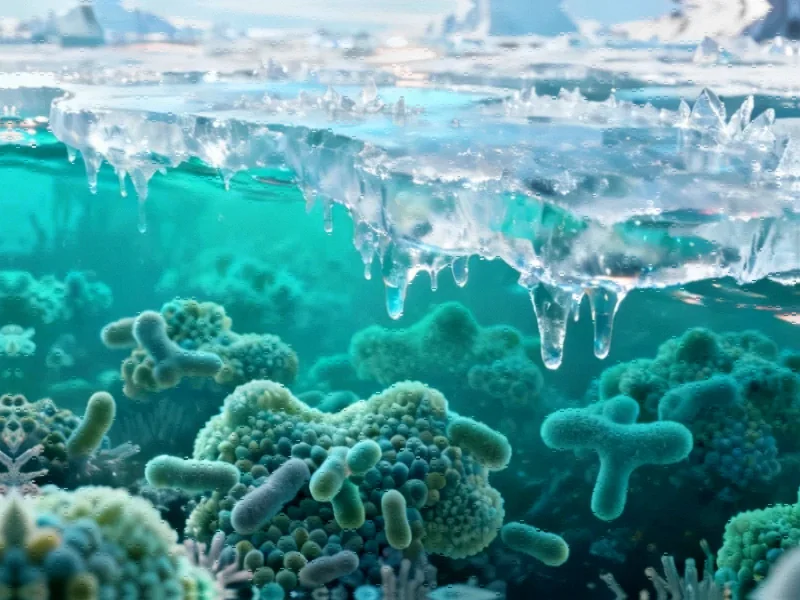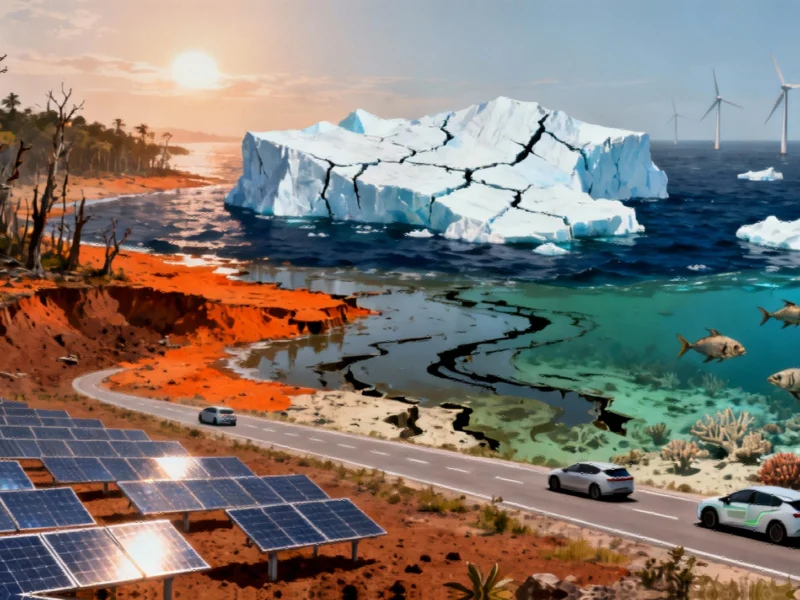Uncovering Arctic Ocean’s Unexpected Nitrogen Fixers
As Arctic sea ice retreats at an unprecedented rate, scientists are discovering surprising biological processes occurring beneath the frozen surface. A groundbreaking study published in Communications Earth & Environment reveals that nitrogen fixation—a crucial process for marine ecosystems—is occurring in ice-covered Arctic waters at rates previously underestimated. This discovery challenges long-held assumptions about polar ecosystems and suggests we may need to reconsider how we model nutrient cycles in our changing climate.
The Silent Work of Non-Cyanobacterial Diazotrophs
Researchers successfully amplified nifH genes from cDNA, indicating active nitrogen fixation, at multiple Arctic stations. The analysis revealed that non-cyanobacterial diazotrophs (NCDs) from phylogenetic Clusters 1 and 2 were exclusively responsible for this activity. At Stations 18 and 36, Betaproteobacterial ASVs of the order Rhodocyclales carried out nifH expression, showing remarkable 98.2-100% nucleotide similarity to the previously identified Beta-Arctic1 group—now confirmed as a key Arctic NCD player.
What makes this finding particularly significant is that these nitrogen-fixing organisms aren’t the photosynthetic cyanobacteria typically associated with this process in tropical waters. Instead, they’re heterotrophic bacteria operating in complete darkness beneath thick ice cover. This discovery parallels other unexpected scientific revelations emerging from polar research as climate change accelerates.
Sea Ice Melt: Catalyst for Nitrogen Fixation
The study found the highest nitrogen fixation rates in waters with actively melting sea ice, particularly in the marginal ice zone and areas with decaying multiyear ice. This relationship appears driven by multiple factors, including the release of iron and dissolved organic matter (DOM) from melting ice, and indirect effects from ice-edge phytoplankton blooms.
As one researcher noted, “Our data suggest that nitrogen fixation in the Arctic is underestimated when sea-ice-covered waters have been excluded.” This finding represents a significant gap in our understanding of polar nutrient cycles, much like how energy storage innovations are revealing unexpected possibilities in material science.
Complex Interactions with Primary Production
The relationship between nitrogen fixation and primary production appears indirect but crucial. NCDs aren’t photoautotrophic, so they depend on organic matter produced by phytoplankton. The study identified three key mechanisms driving this interaction:
- Nutrient dynamics: Diazotrophs gain competitive advantage when phytoplankton deplete dissolved inorganic nitrogen stocks
- Micro-niche creation: Phytoplankton blooms create low-oxygen environments and accumulate phosphorus and trace metals favorable for nitrogen fixation
- DOM stimulation: Labile organic matter from phytoplankton stimulates mixotrophic and heterotrophic diazotrophs
These complex biological interactions highlight how biological systems often involve intricate relationships between different organisms and environmental factors.
Regional Variations and Future Implications
The study revealed significant regional differences in nitrogen fixation dynamics. In the Central Arctic Ocean, nitrogen fixation correlated positively with primary production, while in the marginal ice zone north of Svalbard, peak fixation coincided with ice-edge bloom development. Interestingly, the relationship with phosphorus showed complex patterns—sometimes negative correlations that initially seemed counterintuitive.
Researchers speculate that some diazotrophs may utilize dissolved organic phosphorus (DOP), which increased significantly between research transects. This adaptability mirrors how biological defense mechanisms often evolve to utilize available resources in innovative ways.
DOM Quality Dictates Nitrogen Fixation Activity
The quality and origin of dissolved organic matter proved crucial for nitrogen fixation activity. Freshly produced phytoplankton-derived DOM stimulated nitrogen fixation more effectively than the older, terrigenous DOM carried by the transpolar drift from Siberian rivers. At stations with high colored DOM but low local primary production, nitrogen fixation didn’t respond to labile DOC amendments, likely due to phosphorus limitation.
This sensitivity to DOM quality demonstrates how environmental chemistry drives biological processes, similar to how chemical processes in industrial applications depend on specific conditions and catalysts.
Contrasting Arctic Regions
The study highlights dramatic differences between the Eurasian and Amerasian Arctic. While NCDs dominated nitrogen fixation in the Eurasian Arctic, the coastal Amerasian Arctic hosts active UCYN-A cyanobacterial populations. The single UCYN-A1 detection at Station 38 likely represents populations advected from other regions, emphasizing the connectivity between Arctic basins.
This regional variation in microbial communities underscores the complexity of environmental monitoring in rapidly changing ecosystems and the need for comprehensive sampling strategies.
Broader Implications for Climate Science
These findings have significant implications for understanding how Arctic ecosystems will respond to continued climate change. As sea ice declines further, the patterns of nitrogen fixation will likely shift, potentially affecting broader nutrient cycles and primary productivity throughout the Arctic Ocean.
The discovery that NCDs rather than cyanobacteria dominate Arctic nitrogen fixation suggests polar ecosystems operate differently than lower-latitude marine systems. This understanding could influence how we model future climate scenarios and predict ecosystem responses to environmental change.
As research continues, scientists are developing innovative approaches to study these remote environments with minimal disturbance, recognizing that the Arctic’s hidden biological processes may play crucial roles in global biogeochemical cycles.
Future Research Directions
The study identifies several critical areas for future investigation, particularly the need to understand specific relationships between NCDs and different phytoplankton groups. The potential symbiotic relationships between nitrogen-fixing bacteria and diatoms in the marginal ice zone deserve particular attention, especially as phytoplankton assemblages undergo rapid changes in response to warming.
As one researcher emphasized, “Our work suggests that DOM quantity and quality affect nitrogen fixation,” indicating that understanding the molecular composition of organic matter may be key to predicting future nitrogen fixation patterns in the warming Arctic.
This article aggregates information from publicly available sources. All trademarks and copyrights belong to their respective owners.
Note: Featured image is for illustrative purposes only and does not represent any specific product, service, or entity mentioned in this article.

